Today’s Current Affairs: 9th Oct 2023 for UPSC IAS exams, State PSC exams, SSC CGL, State SSC, RRB, Railways, Banking Exam & IBPS, etc
Table of Contents
Bekal Fort : Kerala

Kerala Tourism Development Corporation’s (KTDC) plan to develop a caravan park and camp shelter at Bekal Fort, situated in the Kasargod district of Kerala.
- Bekal Fort, dating back to 1650 AD and constructed by Shivappa Nayaka of the Keladi dynasty, is known as the largest fort in Kerala.
- Throughout its history, the fort has witnessed the rise and fall of various dynasties and eventually came under the control of the Kingdom of Mysore.
- Bekal Fort’s unique structure, seemingly emerging from the sea, features a water tank, an observation tower attributed to Tipu Sultan, a zigzag entrance, defensive trenches, and strategically placed holes in its outer walls for naval defence.
- Its solid construction is reminiscent of forts like Thalassery Fort and St. Angelo Fort in Kannur, both built by the Dutch.
Veer Gatha Project 3.0:
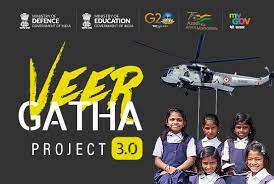
The 3rd edition of the Veer Gatha Project saw active participation from over 1.36 crore school students across all 36 States and Union Territories in India.
- The project, initiated under the Gallantry Awards Portal (GAP) in 2021, aims to highlight acts of bravery by Armed Forces personnel and instil values of patriotism and civic consciousness among students.
- Students submitted poems, paintings, essays, videos, and more to honour these brave individuals.
- Under Veer Gatha Project 3.0, various activities were conducted at the school level, with schools uploading their best entries on the MyGov portal.
- 100 winners (Super 100) will be chosen at the National Level and jointly honoured by the Ministry of Education and Ministry of Defence, each receiving a cash prize of Rs 10,000.
- Winners at the District (4 winners) and State/UT (8 winners) levels will also be recognized and felicitated.
State Of Global Internet Freedom In 2023:

According to a report by Freedom House (a Washington DC-based non-profit) on the state of Global Internet Freedom in 2023, there is a concerning trend of declining Internet freedom for the 13th consecutive year, with 29 countries experiencing a deterioration in the environment for human rights online.
- The report covers developments between June 2022 and May 2023.
- It evaluates Internet freedom in 70 countries, accounting for 88% of the world’s Internet users
- The report evaluates countries based on five censorship methods, including Internet connectivity restrictions, blocks on social media platforms, website blocks, VPN blocks, and forced removal of content.
Highlights of the Report:
- Artificial intelligence (AI) plays a critical role in digital repression. AI-based tools are increasingly sophisticated and accessible, being utilized to spread disinformation in at least 16 countries.
- Additionally, AI enhances content censorship efficiency in 22 countries by automating the removal of content deemed unacceptable for political, social, or religious reasons.
- A record high of 55 out of the 70 assessed countries witnessed legal repercussions for online expression.
- Moreover, in 41 countries, individuals were assaulted or killed due to their online statements.
- Iran witnessed a sharp rise in digital repression due to Internet shutdowns, blocking of social media platforms, and increased surveillance to suppress anti-government protests.
- China remained the worst country for Internet freedom for the ninth consecutive year, followed by Myanmar as the second most repressive country for online freedom.
- India has incorporated AI-based censorship into its legal framework, impacting freedom of expression and criticism of the ruling party.
- The report warns about adverse repercussions for Indian democracy due to the expanding censorship regime, creating an uneven playing field as the country prepares for general elections in 2024.
Fischer Tropsch (FT) Process : Efficient Fuel Production

Recently discovered previously unknown self-sustained oscillations in the Fischer-Tropsch process that could someday allow for more efficient fuel production.
- FT process is the process where synthesis gas (H2 and CO) is converted into a mixture of hydrocarbons, oxygenates, water, and carbon dioxide.
- It was first developed in the 1920s and was named after its discoverers, Franz Fischer and Hans Tropsch.
- It involves the reaction of carbon monoxide (CO) and hydrogen (H2) gases. These gases are typically derived from various sources, including coal, natural gas, or biomass, through the process of gasification.
- Synthesis gas (syngas) is the feed material for a FT process.
- The FT reaction is usually a catalytic reaction at high temperatures and high pressure and the typical catalysts used are based on iron or cobalt.
- FT process is the catalytic polymerization and hydrogenation of CO, which produces a synthetic crude oil (syncrude).
- Syncrude is a multiphase mixture of hydrocarbons, oxygenates, and water.
- The next step is the refining of the syncrude into products that are traditionally produced from conventional crude oil, such as transportation fuels and petrochemicals.
Protein Binders Not Permitted: FSSAI

The Food Safety and Standards Authority of India (FSSAI) clarified that addition of protein binders in milk and milk products are not permitted.
- This clarification came at a time when certain players are adding protein binders to offer thicker texture in dairy products such as curd.
- Protein binders are biological agents have emerged as an important and required class of ingredients to manufacture a wide range of new food products, especially semi-solid or solid foods.
- These are known to affect the digestibility of the protein bound and thus can affect the biological and nutritive value of milk proteins.
- Protein binding also influences the bioavailability and distribution of active compounds.
- Milk protein is a good source of essential amino acids.
- They are easily digestible and do not contain any anti-nutritional factors like many plant-based proteins.
FSSAI:
- It is a statutory body established under the Food Safety and Standards Act, 2006 (FSS Act).
- FSS Act, of 2006 consolidated various acts & orders that had earlier handled food-related issues in various Ministries and Departments.
Payments Infrastructure Development Fund (PIDF) Scheme : RBI
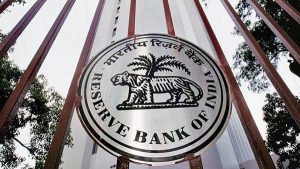
Reserve Bank of India (RBI) recently extended the Payments Infrastructure Development Fund (PIDF) scheme by another two years and will include beneficiaries of the PM Vishwakarma scheme.
- Payments Infrastructure Development Fund (PIDF) Scheme was first launched by the RBI in January 2021 for a period of three years.
- Objective is increasing the number of payment acceptance devices multifold in the country.
- PIDF is a fund set up by the RBI, in consultation with major authorised card networks, to facilitate the development of payment acceptance infrastructure in tier-3 to tier-6 cities and the north-eastern states of India.
- The Union Territories of Jammu and Kashmir and Ladakh will also be given special focus.
- Beneficiaries of the PM SVANidhi Scheme in Tier-1 and 2 centres were later included in August 2021.
- The PIDF is funded by the RBI and the major authorized card networks in India.
- The scheme provides financial assistance to banks and non-bank financial companies (NBFCs) for the deployment of PoS terminals and other payment acceptance infrastructure in eligible regions.
National Means-Cum-Merit Scholarship Scheme:
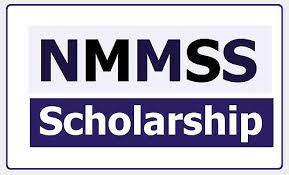
The Ministry of Education recently started online registration for the National Merit cum Means Scholarship Scheme for the year 2023-24.
- National Means-cum-Merit Scholarship Scheme (NMMSS) is a Centrally Sponsored Scheme launched in May, 2008.
- Objective: Award scholarships to meritorious students of economically weaker sections to arrest their dropout at class VIII and encourage them to continue the study at secondary stage.
- One lakh fresh scholarships are awarded by the Ministry of Human Resource Development to selected students every year for study in classes from IX to XII in recognized Government, Government-aided, and local body schools.
- The amount of scholarship is Rs. 12000/- per annum (Rs. 1000/- per month) per student.
- NMMSS scholarships are disbursed directly into the bank accounts of selected students by electronic transfer through the Public Financial Management System (PFMS) following DBT mode.
- Eligibility criteria:
- Students whose parental income from all sources is not more than Rs. 3,50,000/- per annum are eligible to avail the scholarship.
- The students must have minimum of 55 % marks or equivalent grade in Class VII examination for appearing in selection test for award of scholarship (relaxable by 5% for SC/ST students).
- The students should be studying as regular student in a Government, Government-aided and local body school.
- The students studying in the Navodaya Vidyalaya Samiti (NVS), Kendriya Vidyalaya Sangathan (KVS) and residential schools are not eligible for the scholarships under the NMMSS.
- There is reservation as per State Government norms.
SUGAM REC App:
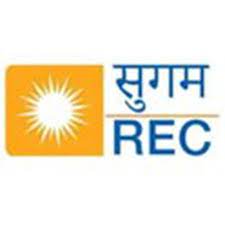
REC Limited, the Maharatna Central Public Sector Enterprise launched a SUGAM REC mobile application.
- SUGAM REC App is exclusively for current and future investors in REC’s 54EC Capital Gain Tax Exemption Bonds.
- Investors will be able to download their e-bond certificates, apply for fresh investment, download important forms related to updating of KYC, and also connect with REC’s Investor Cell via call / email / WhatsApp.
- These are also known as Capital gain bonds are fixed income instruments which provide capital gains tax exemption under section 54EC to the investors.
- These bonds allow an assessee/investor to save income tax on long-term capital gain by investing the gains.
- The investment into these bonds has to be made within 6 months from the date of long-term capital gain.
- They have a fixed lock-in period of 5 years and can be either held in Physical or Demat form.
- They are issued by various institutions managed by the Government of India to finance specific capital projects.
- They are called 54EC bonds because the taxability benefits of these bonds are mentioned under section 54EC of the Income Tax Act, 1961.
Atmospheric Perturbations Around The Eclipse Path (APEP) Mission:
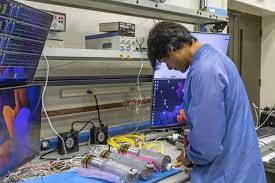
NASA is set to launch a mission called APEP to study how a solar eclipse affects the upper atmosphere.
- The mission will involve launching of three rockets equipped with scientific instruments.
- Objective to know how the upper atmosphere will change during the eclipse, especially the moment when there would be a sudden reduction in light.
- During an eclipse, the sudden drop in sunlight causes changes in the ionosphere, creating waves that ripple through this atmospheric layer.
- It will measure changes in electric and magnetic fields, density, and temperature.
- This launch will take place at the White Sands Missile Range in New Mexico, with a specific focus on the ionosphere.
- According to NASA, the ionosphere’s temperature and density are projected to decrease during the eclipse, resulting in a wave-like disturbance that has the potential to disrupt GPS and other satellite communications.
Card-on-File Tokenisation : Reserve Bank Of India

The Reserve Bank of India (RBI) proposed to introduce Card-on-File Tokenisation (CoFT).
- Card-on-File transaction is where in cardholders authorizes merchants to store their payment information securely and bill cardholders’ stored accounts for future purchases.
- Tokenisation refers to replacement of actual credit and debit card details with an alternate code called the “token”, which will be unique for a combination of card, token requestor and device.
- This shall be unique for a combination of card, token requestor (i.e. the entity which accepts request from the customer for tokenisation of a card and passes it on to the card network to issue a corresponding token) and the merchant (token requestor and merchant may or may not be the same entity).
Watermeal : World’s Smallest Flowering Plant

Scientists are conducting research into the potential of watermeal, the world’s smallest flowering plant, as a source of nutrition and oxygen for astronauts.
- Watermeal is an aquatic plant in the Araceae family.
- It is the smallest flowering plant in the world and appears as small green seeds.
- It is often referred to as “duckweed” because it is a favorite food of ducks.
- It flourishes in temperate, sub-tropical, and tropical locations.
- They grow on the surface of lakes, ponds, and marshes.
- It is a very tiny (less than 1 millimeter) light green, free-floating, rootless plant.
- It is branchless and also has no leaves.
- It consists of a single, oval, or spherical frond that floats on the surface of still or slow-moving water bodies.
- It also produces the world’s smallest fruit, called a utricle.
- It is a nutritional powerhouse.
- It is a complete protein, meaning that it contains all nine essential amino acids.
Iron Dome : Israel’s Anti-Missile System

Iron Dome, Israel’s anti-missile system recently intercepted over 5,000 rockets launched from Gaza, a narrow strip that is home to 2.3 million Palestinians.
- Iron Dome is Israel’s air missile defense system that can defend against short-range rockets, intercepting them in the air above the state.
- It is capable of successfully handling multiple rockets at a time.
- Developed by Rafael Advanced Defense Systems and Israel Aerospace Industries, the system became operational in March 2011.
- The Iron Dome functions by detecting, analyzing, and intercepting varieties of targets such as mortars, rockets, and artillery.
- It is powered by missile-defense batteries.
- It has all-weather capabilities and is able to function night or day and in all conditions, including fog, rain, dust storms, and low clouds.
- It is able to launch a variety of interceptor missiles.
- It is designed to shoot down missiles with a range of about 40 miles or less.
- It also has the ability to be moved, either onto ships or across land, to better suit defense needs.
- It must be reloaded to continuously intercept incoming missiles.




